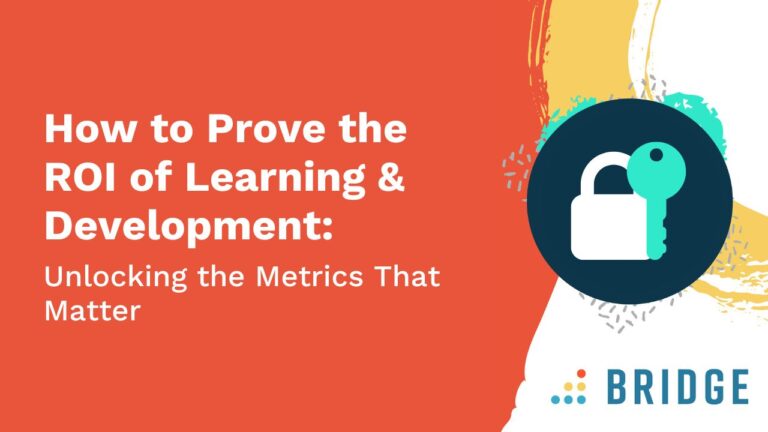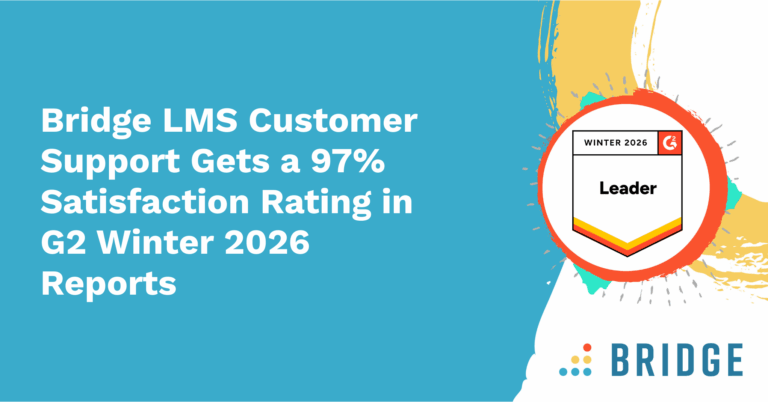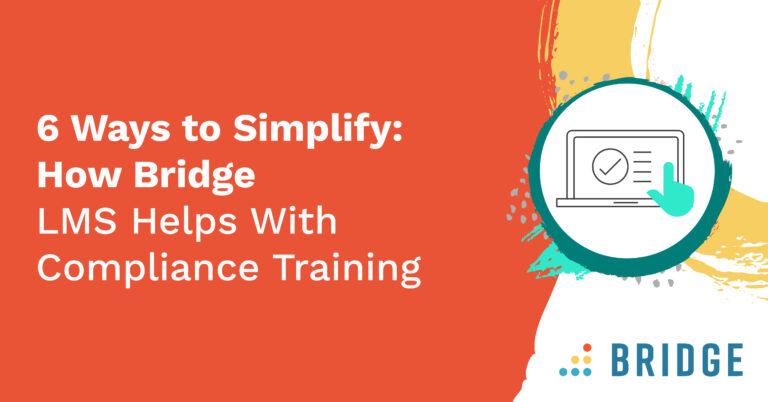When you’re looking to maintain, protect, or grow the budget that powers your corporate LMS (not to mention the rest of your L&D ecosystem!), you need to be able to make your case to business-minded stakeholders. These C-suite executives want hard data that points to tangible business impact—and, when you know where to look, that’s exactly what you can give them.
You’ve got a wealth of areas across your organization that benefit from L&D, and they all have a data-backed story to tell. When you know what kind of results you can expect your L&D investments to deliver, you can start planning ways to measure those results and couch them in terms your C-suite will appreciate. That means looking beyond the course usage and completion metrics that, while an essential part of your learning analytics, need to be combined with business impact data to make the most compelling case to the people holding the purse strings.
Read on to discover the quantifiable outcomes your C-suite wants to see, including:
- Increased levels of engagement
- A strong reputation for learning
- Powerful internal mobility practices
Employee Retention and Acquisition
You’ll likely be aware, in broad terms, that good L&D can have a positive impact on employee retention and acquisition. These are fantastic factors to consider when you’re looking to demonstrate quantifiable returns on your L&D investments, provided you can guide stakeholders through the chain of linkages that connect learning to cost savings.
So, what’s the evidence that L&D reduces turnover and increases an employer’s appeal for prospective applicants? And how can you leverage that information to impress your internal stakeholders? Read on.

Articulating the Value of a Strong Reputation for Learning
According to 2023 research, organizations that don’t offer development opportunities risk losing talent—in fact, that lack of development was respondents’ most commonly cited reason for quitting. The conclusion here is simple enough: when you’ve got a robust, tech-backed culture of learning, your organization is going to be more appealing to all those prospective hires looking for development-rich career opportunities.
We’ve established that L&D can, in theory, have an impact on your reputation and on the talent acquisition that follows. But how might you turn this observation into a solid case for the business impact of your L&D investments?
If you just wanted to show that your L&D efforts have left you with a good reputation for employee development, that’s fairly straightforward to achieve. You might, for example, incorporate a survey question into your application process, asking applicants why they’re interested in your organization. If applicants are citing your learning culture, you’ll know your reputation is growing in the right direction. But on its own, that information just isn’t enough. It might get across some positive sentiment directed toward your L&D function, but it doesn’t tell upper management how your learning-first reputation leads to business impact.
Instead, you’ll want to identify some of the measurable benefits associated with your talent acquisition. If you’ve got a reputation for those sought-after employee development offerings, you can expect a wider pool of candidates—which means you’ll have more high-caliber hires to choose from. Demonstrate that high caliber to your CFO by taking note of factors like reduced time to competency or increased productivity in departments that receive new hires. You’re then just a step away from a set of highly tangible data that business leaders will find much more persuasive.
RELATED READING | ‘Pitch (And Implement) Your Training Budget With These 4 Simple Steps’
Communicating the Links Between Engagement and Your Bottom Line
Given the popularity of employee development among workers, it’s no wonder that L&D is often linked to higher levels of employee engagement. According to research sponsored by Bridge, learning opportunities were the most commonly cited factor among respondents looking to nurture engagement.
Gaining employee engagement data is straightforward enough with the right tools. In fact, Bridge itself offers employee engagement software that allows you to send out regular pulse surveys to check in on engagement levels. So, if you’re looking to establish how your L&D program leads to better business outcomes, you’d be wise to prove that your learning investments are impacting engagement. You might achieve this by conducting before-and-after snapshot surveys to see if your engagement levels improve following a new learning initiative.
However, once again, engagement statistics alone aren’t necessarily enough to sell your learning investments internally. To the people holding the purse strings, the question’s going to be “so what?”, and—with the right preparation—that’s a question you can answer with hard figures.
According to Bridge’s report, the area most commonly impacted by employee engagement is retention. So, once you’ve established that your learning investments are engaging your people, you can start to examine your turnover figures. If your more engaged employees are sticking around for longer periods of time, you’ll be able to point to the substantial, dollars-and-cents cost savings that’ll likely justify any initial L&D expenditure.
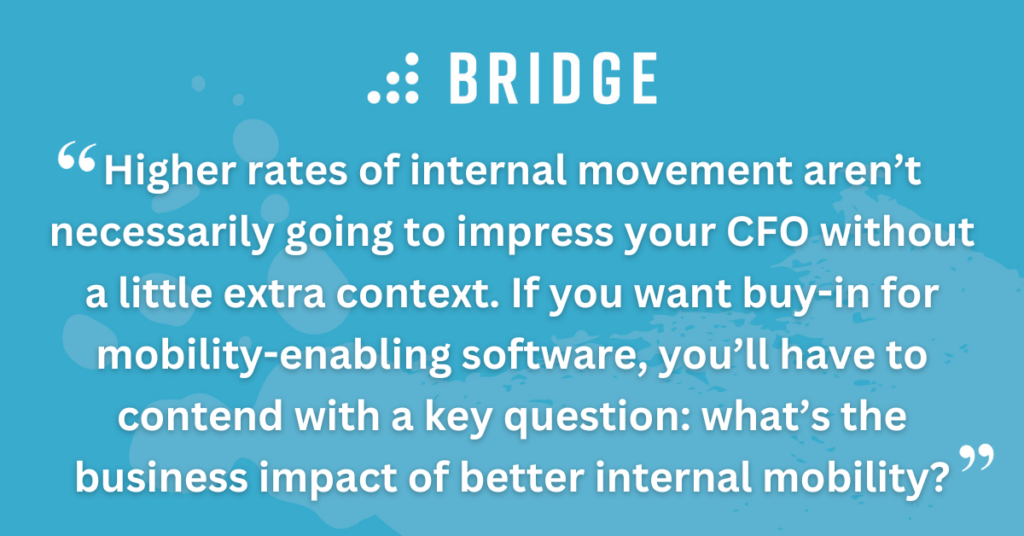
Connecting Mobility Metrics to Clear Cost Reductions
Promotions and other kinds of internal movement are made possible in part by learning—and, handily, this is something that your HR function will have plenty of data on. If your people are using your learning ecosystem to qualify for internal vacancies, you’ll be able to link the course usage data in your LMS to the talent mobility data held by your HR team. The result? A compelling business case for your learning function: one in which L&D is the lynchpin of talent mobility.
That said, higher rates of internal movement aren’t necessarily going to impress your CFO without a little extra context. If you want buy-in for mobility-enabling software, you’ll have to contend with a key question: what’s the business impact of better internal mobility?
Once again, turnover numbers are your friend here. Research shows that turnover is less likely when employees are able to move internally. And that’s especially true of workers born after 1996, who—according to LinkedIn—are much more likely than older generations to agree with the statement that “through learning, I can explore potential career paths at my company”.
So, your challenge isn’t just to show that your learning ecosystem has led to a rise in internal mobility. It’s to show that these upward or lateral movers are sticking around for longer rather than seeking opportunities elsewhere, reducing the various costs associated with hiring new talent.
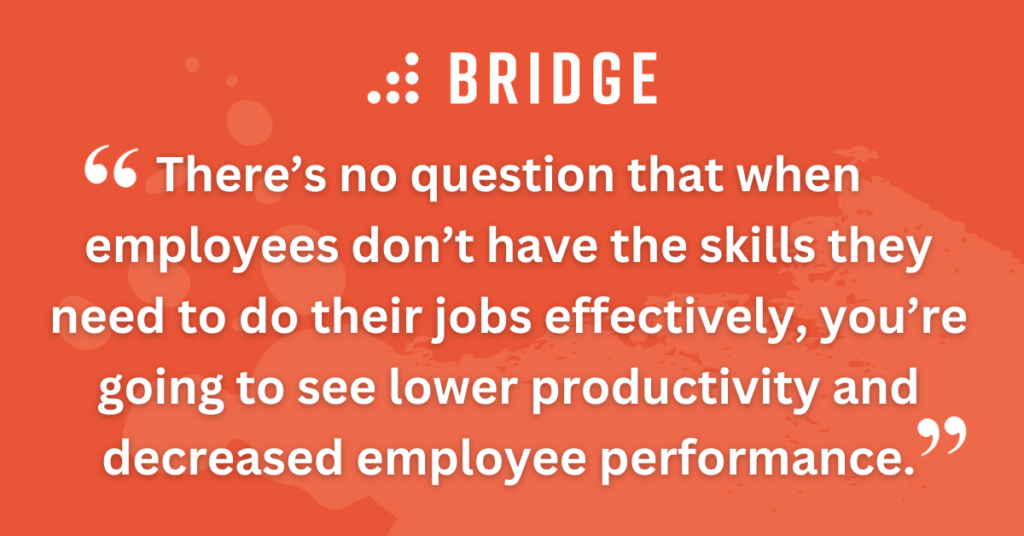
Reskilling and Upskilling
According to a survey from GP Strategies and Watershed, less than half of respondents agreed or strongly agreed that their organization uses data to understand skills gaps. That’s a lot of room for improvement, especially when 69% of organizations reported having a skills gap in 2023—compared to 55% in 2021.
This is an alarmingly large number that’s growing at an equally alarming rate, and there’s no question that when employees don’t have the skills they need to do their jobs effectively, you’re going to see lower productivity and decreased employee performance.
Clearly, the ability to close those gaps through learning and skills development practices has huge implications for any business’ bottom line: it’s no wonder that Watershed names new skills qualifications as one of the more valuable L&D targets to measure.
Regulatory Compliance
In general terms, your discussions about L&D investments will center around how your learning resources make an impact. But there’s one exception. In the world of compliance, there’s a strong case to be made for the avoidance of impact—especially when it comes to the serious penalties that noncompliance can bring.
If your learning technology can keep your people compliant—whether that’s by consistently training employees on the same standards, keeping everyone up to date, or providing that all-important compliance documentation—you’ll protect your organization from outcomes as serious as major fines or even being shut down. This is especially true of organizations in high-consequence industries, which often face additional compliance challenges around multilingual needs and data security.
A little digging into the penalties your organization is exposed to can go some way toward justifying any L&D expenditure that puts compliance first. According to the U.S. Securities and Exchange Commission, 2023 saw fines for financial noncompliance alone totaling around $5 billion. Against even a small slice of a figure like that, you’ll have no problem making the case that the cost of a compliance-first LMS (for example) is more than justified.
And good compliance training doesn’t just help you avoid fines. It can also offer savings like lower insurance costs—a tangible figure that will go some way toward mitigating your initial learning tech expenditure.
MAKE TRAINING MORE THAN MANDATORY | ‘Go Beyond Compliance Training: How an LMS Can Drive a Learning Culture’
Ready to Tell the Story of Your L&D Impact?
Download our ebook, ‘Putting Impact-Backed ROI at the Heart of Your Learning Ecosystem,’ and discover how to put your L&D impact metrics to good use.
